Last week I was happy to being able to hand over a brandnew sister ship of my own GEKKO, which is yet another First 27 SE in the Baltic Sea. We finally made her ready for service, had her commissioned and rigged and now it was the big day for ASTEROIDEA, that´s her name, to being received by her owner. This one, Stefan, is – like any other Seascape/First-skipper I know of – a very sympathetic, nice guy. Besides the fact that every new boat in the water is always a big occasion, this particular boat was unique in a special detail: She is our first boat to be fitted with an all-electric engine-system by E-Propulsion.
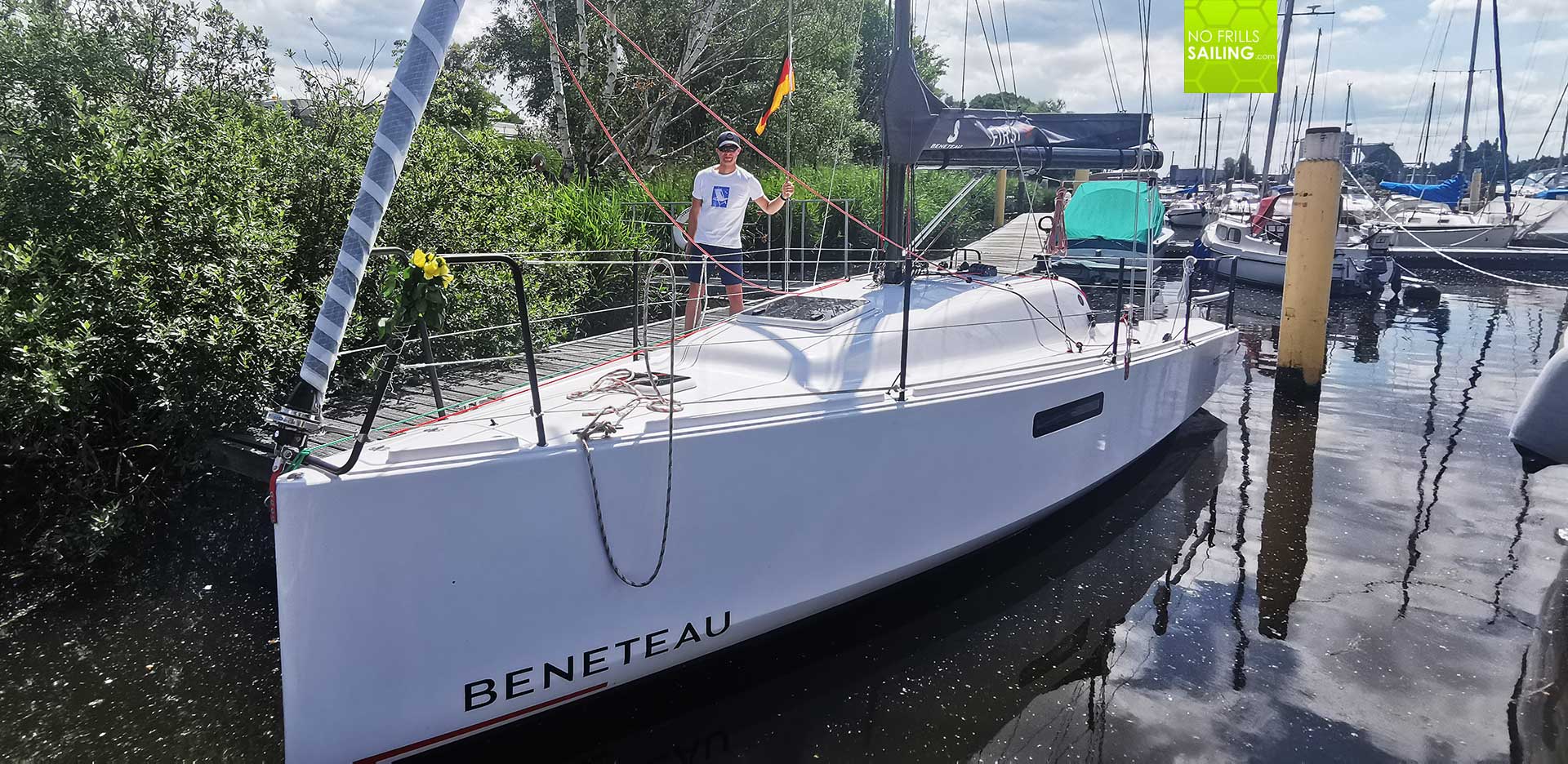
The decision to switch from Torqeedo to E-Propulsion was made by the owner based on a few facts: First of all, Torqeedo receives – let´s say mixed – reviews by their customers, especially regarding after sales and customer care. I am a Torqeedo-user myself and I definitely see the point here. Secondly, after all, E-Propulsion at least seems to offer the same product to a significantly lower price. I´d say that the budget needed for the latter is some 30 per cent lower than that of Torqeedo. On the other hand, Torqeedo is a company based and – acclaimed – making their stuff in Germany whereas E-Propulsion is a China-based company. Anyways, I write this article to report on our first real life test of the E-Propulsion setup here, not discuss pros and cons of one or two brands.
Smaller, smarter and much more space
First of all, we´ve had quite a journey with E-Propulsion. Acknowledging that – unlike Torqeedo – this brand did not offer a 4.0 kilowatts engine (like I do have on my own boat) so we´ve hade to decide between 6 and 3 kilowatts. We decided to go for the smaller because of less size, weight and dimensions. We reckoned that the engine would 90 per cent of all use-cases be utilized for marina maneuvering only. For E-Propulsion, that means to go for the Navy 3.0 product. First engine ordered, our technical staff noted that the headmount of the engine was too big to fit the engine shaft, so we had to switch to the Navy 3.0 pod drive unit.
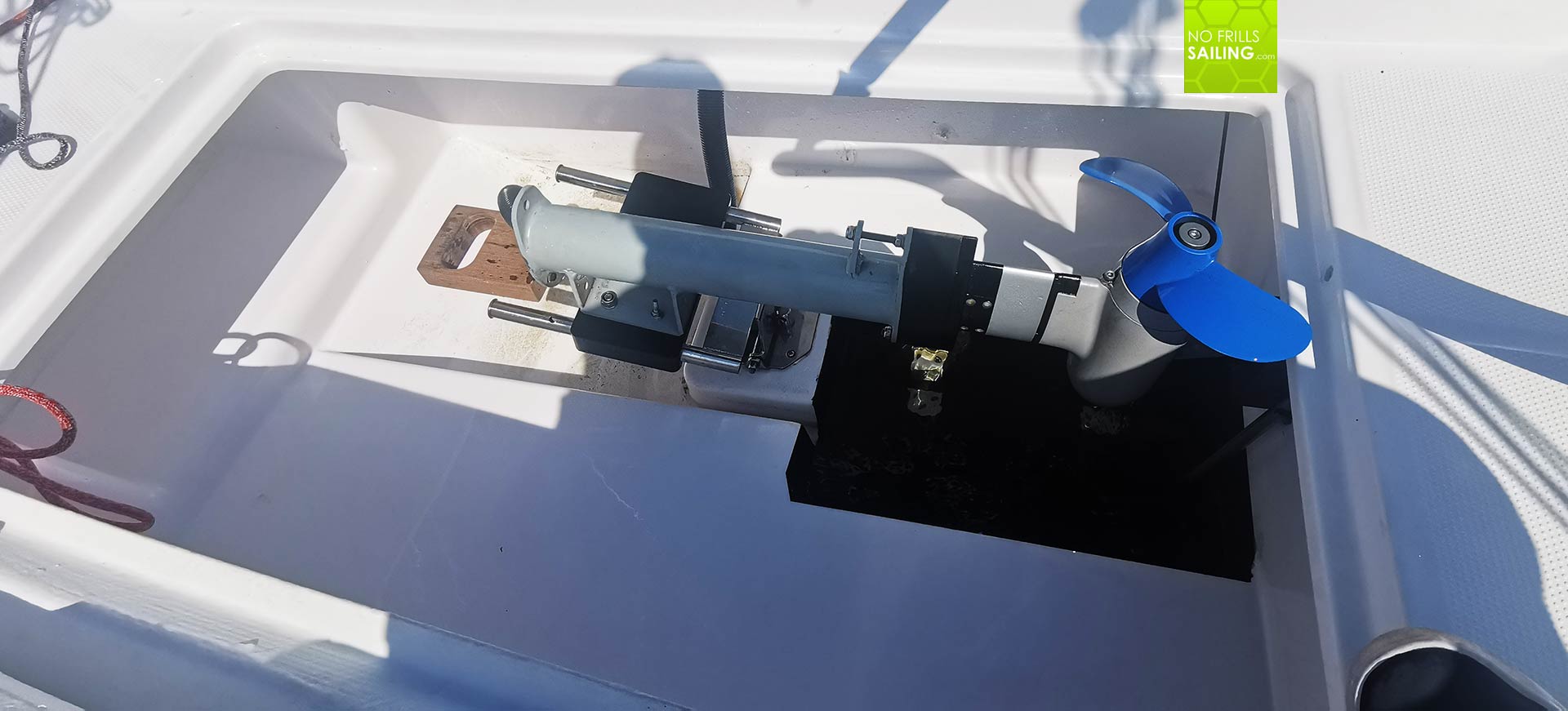
This one, albeit being significantly lighter and even more compact in size, needed a custom made slide-mount, I´ve made a dedicated article on this detail too, click here. We manufactured a steinless-steel mount perfectly matching the size of the pod, fitted to the standard engine bracket of the First 27 SE. In this way, our skipper would as well be able to take it in completely and close off the engine shaft, such as it is the concept of the boat. Looking at the engine in “sailing-mode” laying down resting in its bracket, I noticed how much more free space there is in the “engine compartment” compared to my own boat.
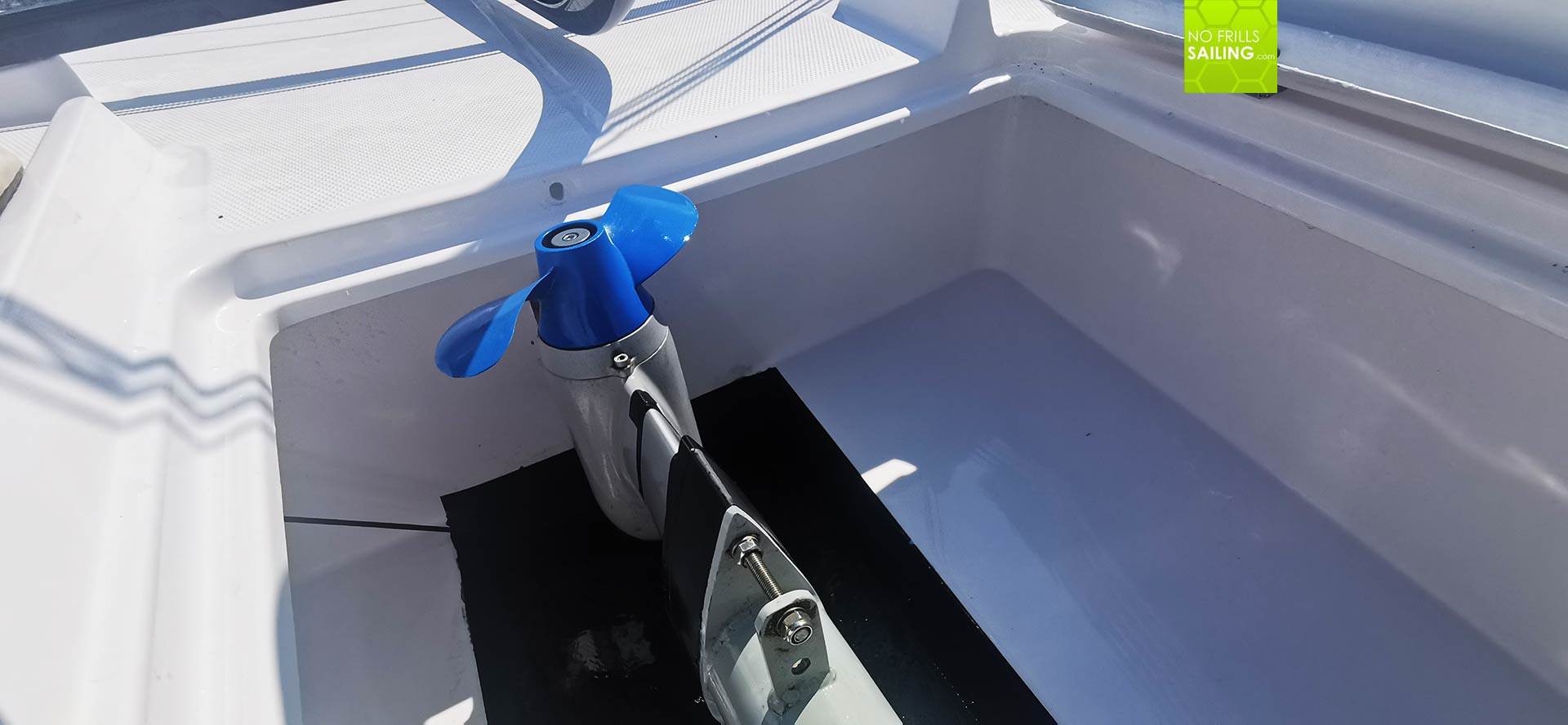
Also, bringing the shaft to the water (and more over, retrieving it when underway) is much, much easier than on my boat: You simply take out the safety pin and slide it down. Because of the fact that this engine is already aligned to the longitudinal axis of the boat, you do not need to turn the 90 degrees. A fixed alignment also means that the screw always points exactly 180 degrees backwards -with my own boat I have to make sure that there is no tilt here and there´s always the possibility for the shaft to rotate. Not on this boat.
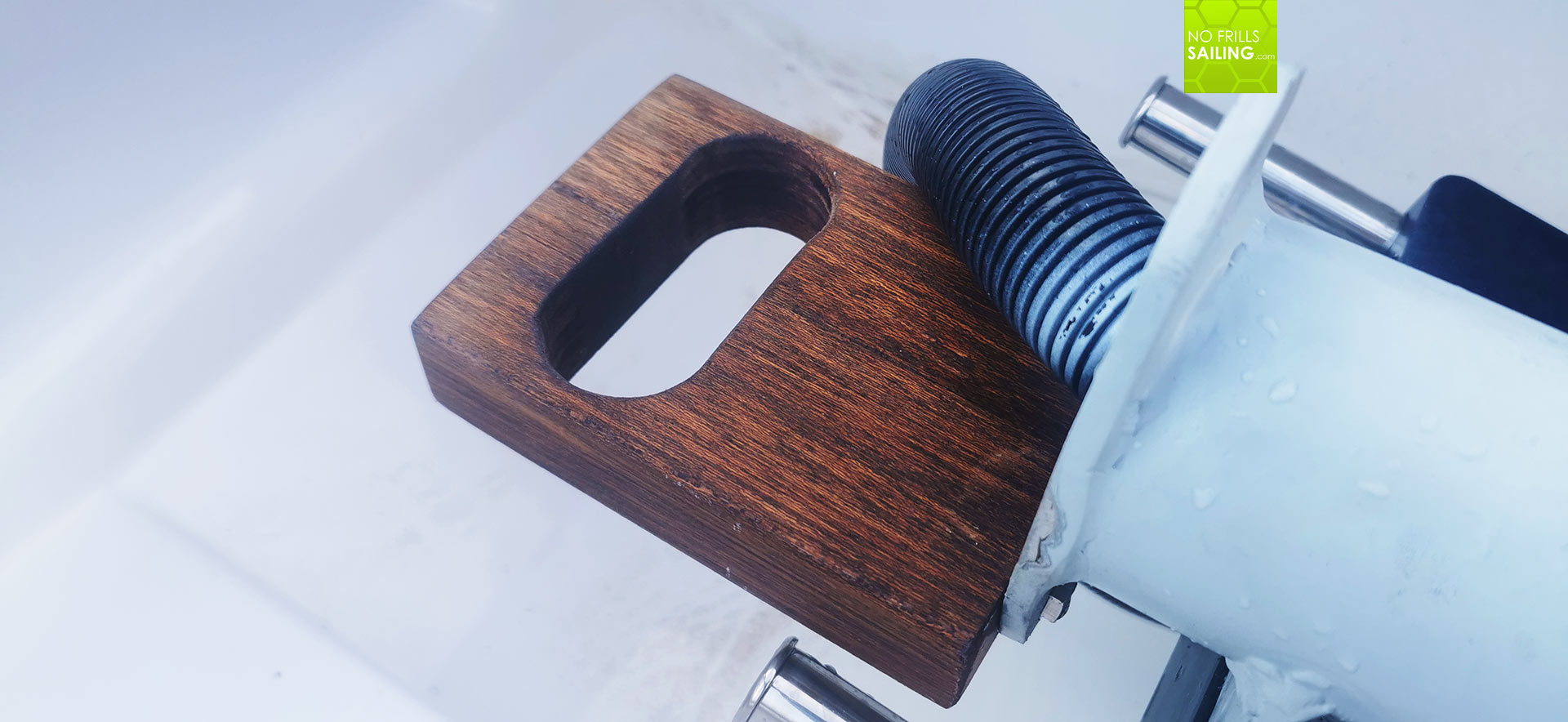
To make taking in and bringing out the shaft easier, our crew manufactured a massive Teak-handle and vis-à-vis a Teak bar with a slit into which the fin of the engine will be inserted and is resting when in “sailing mode”. A pretty clever solution and easy as ABC to use. All in all I´d say that taking in and bringing out the engine-shaft take about half the time and significantly less efforts than I have with my setup. I´d also note that my engine is bigger, has more power and the screw is a three-bladed one, being bigger too.
First miles with E-Propulsion Evo Pod Drive Evo 3.0
So, after the paperwork was done and our client turned into the owner, we prepared the boat for casting off. Handover took place in Luebeck, which meant that a 6.5 mile trip downriver was ahead of us before we´d be able to hoist sails for the first time. There was very low wind, no waves of course and much sun – the perfect setting for a maiden voyage. I can say that the feeling of all components of the E-Propulsion drive is great. A heavy quality, less plastic and more metal – everything felt rigid, rugged and fine.
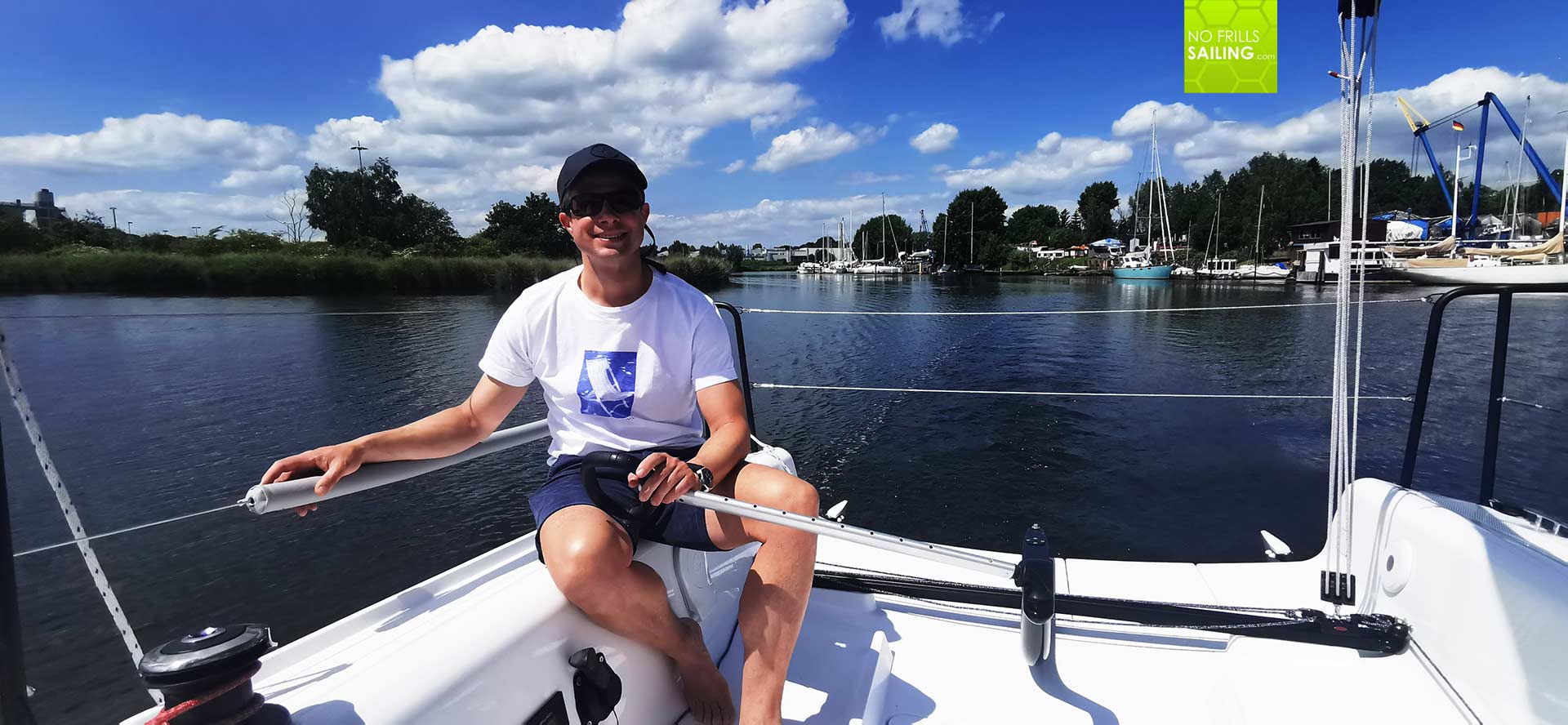
The engine runs – as every electric propulsion – with a very low noise level. Once outside the marina we barely couldn´t hear a thing. We put the lever to some 600 to 1.000 Watts output which meant a speed of 3.0 to 3.5 knots. I usually travel at this speed too as it, from my point of view, is the best compromise between achieving the greatest range by saving energy. All went fine and we were pretty confident.
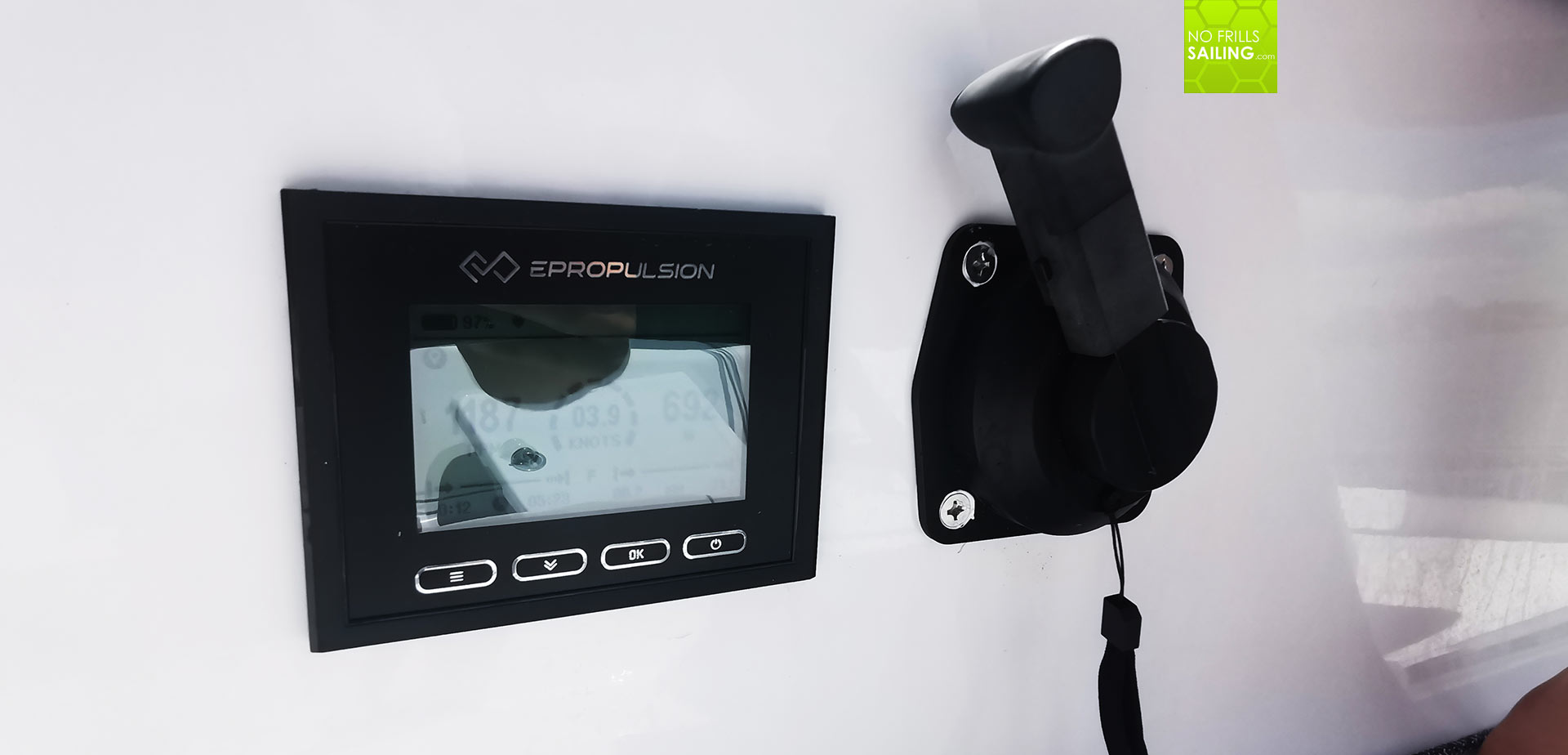
One thing I noticed is significantly better with E-Propulsion compared to Torqeedo is the display unit. Without consulting the manual at first, we were able to interpret all readings at once: Range, miles made good versus miles left, hours made good versus hours left, percentage of battery left and of course speed. The display is roughly threefold the size than that of Torqeedo, all readings are visible at one glance. Well done, E-Propulsion!
The power of the E-Propulsion
Once weh ad cleared the River Trave and headed for the open sea, a big ferry ship came up abaft, overtaking us. This happened right at the entrance to the harbor, so exactly when the big ass ferry had overtaken, the Captain went to “all ahead” and the mighty screws began to produce a nightmare wake of swirling eddies. Our tiny 8 meter boat in the midst of it while other yachts turned away to avoid the whitewater-area. That was the time to test “flank ahead!” of the E-Propulsion. Of course, our boat was heavily beaten and thrown about from one side to another, we always had enough power to keep her on course and safe even when the swirling eddies had the boat.
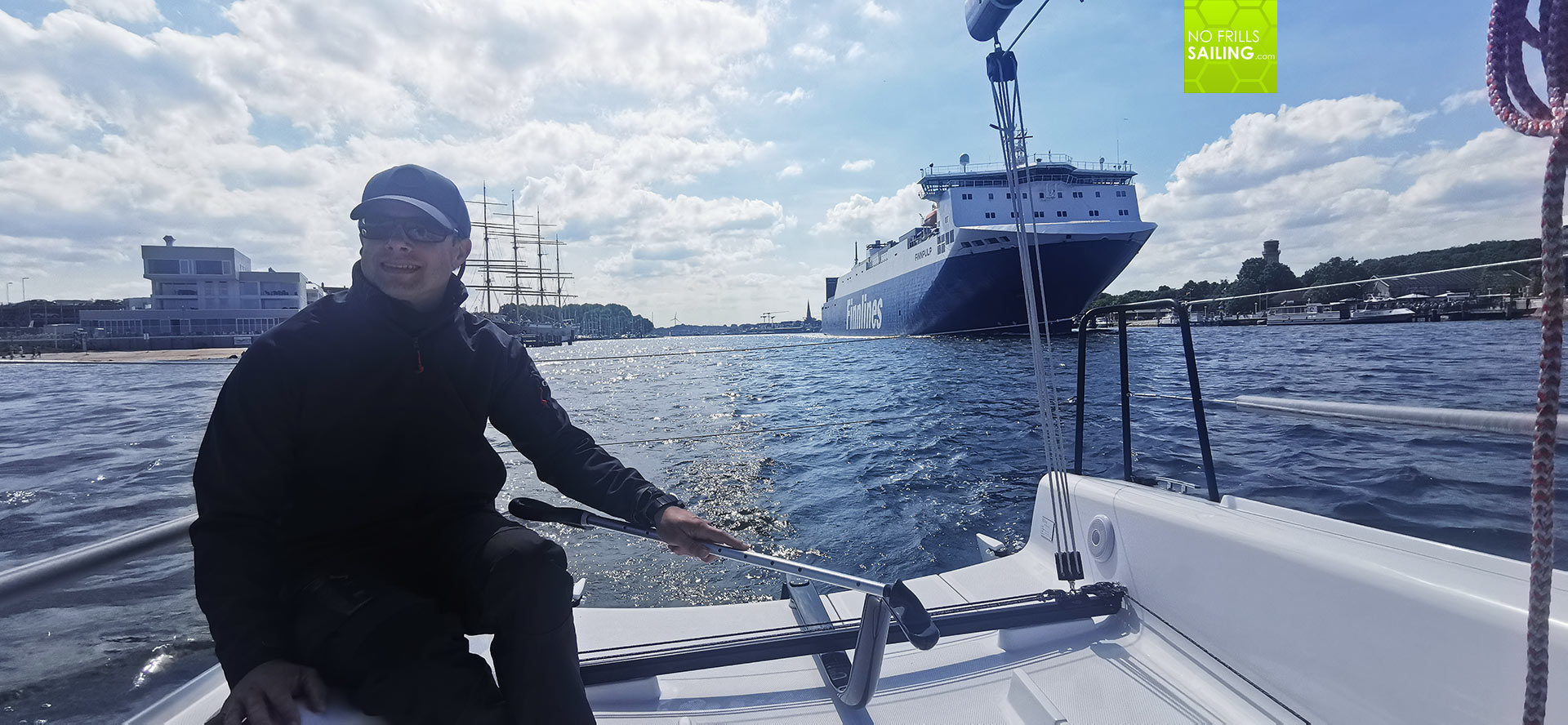
Once cleared the area, we set sails, took in the engine and sailed – in a nice 16 knots breeze – all across the large Luebeck Bay towards the new home port of ASTEROIDEA, an occasion I will make a dedicated article about as well as this boat was fitted not with standard sails but with custom made Quantum CDX-laminate sails. But back to E-Propulsion …
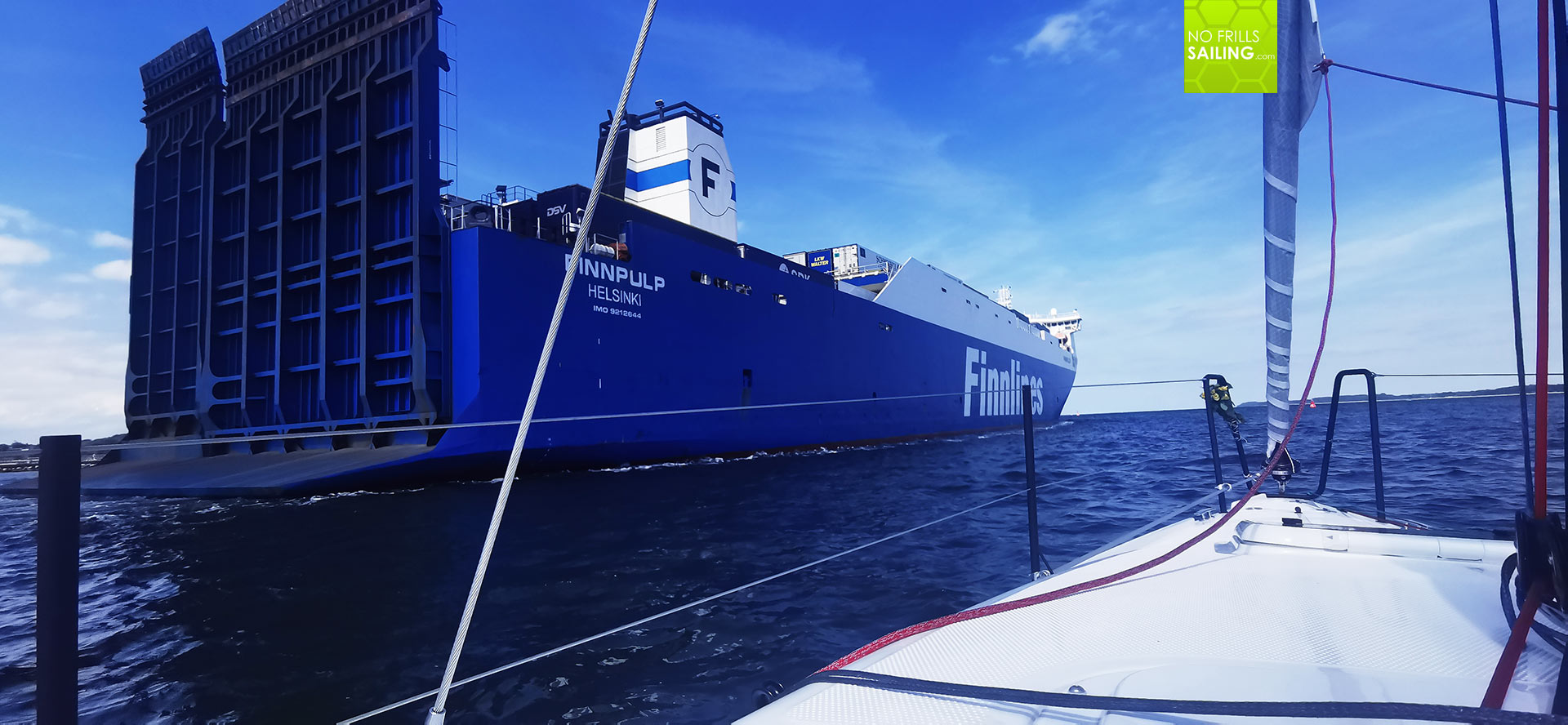
We reached ancora marina after a very nice summer sail, set in motion the engine again and before docking did a test run at flank speed (but this time without whitewater adventure). At 3.000 watts, which is the maximum power output of this engine, the boat accelerated to 6.5 knots. Also, stopping dead went just fine as did an emergency push. Slowly and controlled, our new owner steered his brand new toy proudly to his pontoon, where we shook hands and I got thanked with a big hug: Happy client, dedicated and satisfied owner.
Wrap-up: First impressions
Now, what´s my first impression? Regarding product quality and fitting, I can say E-Propulsion is not cheap China-made. It comes in a solid, rugged material quality. My technical staff told me that they did not have any problems with the installation process. But: With the E-Propulsion battery E80 with roughly 4.000 W-hours is significantly heavier than the Torqeedo WH 48-5000. Those 12 kilograms surplus weight (plus some more for the “heavier” quality of the other parts) account for a much higher weight of the setup compared to Torqeedo. That´s a downside: The ASTEROIDEA sits a centimeter or two lower in the water, which is most visible abaft.
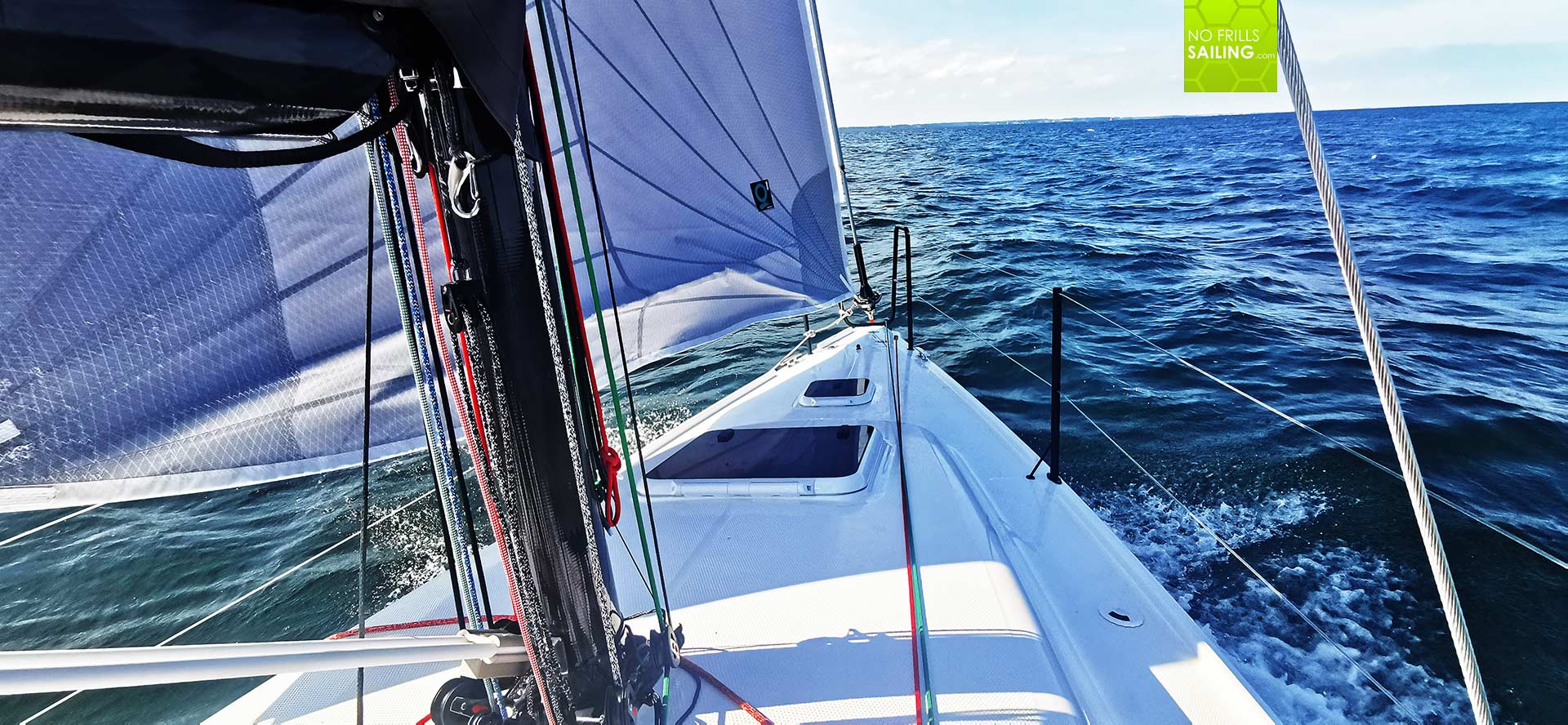
Also, as the battery has 1.000 W-hours less and the engine has 1 kilowatt less power, generally, more power is needed to achieve the same speed while the “smaller” battery offers less range from the start. That means that the overall range of ASTEROIDEA will be noticeably less than that of GEKKO. We feel that this is a negligible fact as we usually sail the boat, but it´s a fact worth noticing. On the other hand, saving roughly 6.000 Euros on the whole setup is a nice bargain that could be re-invested in – for example – better sails, which our client did indeed. But that´s another article. For now, we fine tune the E-Propulsion setup, do some more calibration and wish our new skipper a great time aboard his new, quick boat.
You may as well be interested to read these related articles:
Opting for E-Propulsion instead of Torqeedo: Why? (LINK)
Fitting the Torqeedo electric drive to a sailboat, parts 1 and 2 (LINK)
Sailing GEKKO for the first time(LINK)
